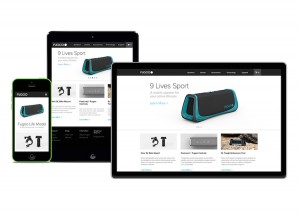Micro-campaigns, feedback loops and mass personalization will take center stage in the new year for agile marketers.
Marketing is one of the fastest-changing professions today. And like fashion trends (glad that bike shorts with blazers phase is over), as a marketer, you don’t want to find yourself “oh, so last year!” Read on to hear what’s hot for marketers in 2020 and how you can get ahead of the game.
Micro-campaigns
Much like the plaid miniskirt trend, micro-campaigns are short and sweet. If you haven’t heard of a micro-campaign, no worries — 2020 isn’t here quite yet.
Micro-campaigns are small pieces of a larger campaign and these bite-sized campaigns are released to customers earlier.
For example, you have a new product launch for athletic shoes. In the 2019 way of working, you’d spend a few weeks (or months) planning the campaign from beginning to end. It would include sponsorships, blog posts, social contests, in-store promotions, etc., with every last detail for the entire campaign planned in advance.
In 2020, you’re going to try the micro-campaign approach. Instead of detailed campaign planning, you start with a goal. Let’s say your goal is to increase awareness of a new shoe for teens in the Southwestern United States and to have these shoes purchased as a second pair in a BOGO offer when a parent purchases the first pair.
The goal says what you’re striving for, not the marketing that you’ll do to get there.
The marketing team then meets to brainstorm campaign ideas and prioritizes them into a marketing backlog. The backlog is different from the project plan because the work moves up and down in priority but just as importantly, it isn’t promised. Work may or may not happen based on how customers react.
Let’s say that your first piece in the micro-campaign is a YouTube video featuring teens wearing the shoes.
The YouTube video is a low-cost effort that you can get to market relatively quickly. While you plan to do more marketing, your first micro-campaign allows you to launch something much sooner than if you were to spend the upfront time planning everything.
In this scenario, instead of a large upfront planning phase, you focus on your goal, work as a team to brainstorm campaign ideas, decide which one you’re going to try first, and voila, it’s in the hands of your prospective customers!
The reason micro-campaigns are the new way for marketers to work is that campaigns don’t do any good in a planning phase. Many companies spend endless hours planning out intricate campaign details only to learn that the finally agreed-upon message doesn’t resonate with potential buyers.
Micro-campaigns are a quick, low-risk way to test the market and see if your campaign is on the right track.
In this case, your YouTube video was a viral sensation, your messaging was spot on and you can go ahead and try the next piece in your micro-campaign. Maybe you’ll nail it; maybe you won’t. Micro-campaigns allows marketers to adjust quickly and build on the momentum from your audience, not what your boss thinks your customers’ need to see.
Data-driven, rapid feedback loops
While rapid feedback loops have been around for a while, they are becoming more and more data-driven. If you haven’t incorporated feedback loops into your marketing yet, don’t worry – it’s not too late.
Regular old feedback loops can happen in many different forms, but they’re easiest to do when you’re running micro-campaigns.
Let’s take your YouTube video promoting the new athletic shoes. Your feedback in this scenario can come from seeing how many views you receive, reading comments and learning what about the video resonated with the audience.
This is a very non-techy way to incorporate feedback, but it’s still good. You can get this kind of feedback in a few days if you launch your video first. If you wait until you’ve perfected all of the campaign elements, this feedback is meaningless because there’s nothing you can do with the information.
To take your feedback to another level, marketers in 2020 will incorporate tools that automate a lot of this work to make it easy.
There are endless tools to experiment with and here are a few you may want to check out this roundup from mopinion.
Mass personalization
If you’re a GenXer like me, you probably learned about mass marketing in college. If you kept that old 1995 college marketing textbook, you may want to throw it off the 100th floor of a very tall building! Or you can take what it says and do the exact opposite because in 2020, customers want marketing to be very personal and all about them. After all, there are millions of websites and social platforms people can turn to, so if your messaging isn’t resonating with customers right away, they’ll go elsewhere.
Companies no longer have the luxury of pushing messaging that is self-serving. No one cares that you want to sell shoes. In fact, hard-selling in any way, shape or form is just so 1995!
So what’s a modern marketer to do? It’s really about testing and learning. We don’t know what’s going to resonate with our customers and prospects until we try out a few different approaches to see what resonates.
So this leads us right back to steps one and two: micro-campaigns and data-driven rapid feedback loops.
With micro-campaigns, we can succeed or fail with our personalization quickly. And with rapid feedback and supporting data to back it up, we can be agile and switch gears.
So what is being a marketer in 2020 really going to mean? It’s about learning-by-doing, backing up what we do with data and making our marketing about our customers, not our company.
Opinions expressed in this article are those of the guest author and not necessarily Marketing Land. Staff authors are listed here.
Marketing Land – Internet Marketing News, Strategies & Tips
(43)
Report Post





